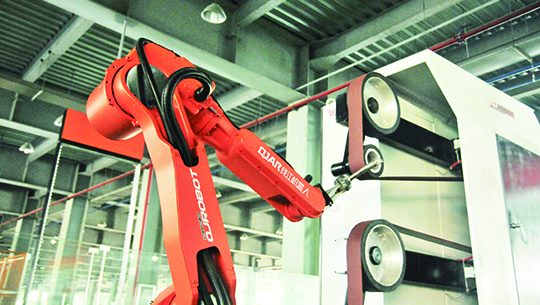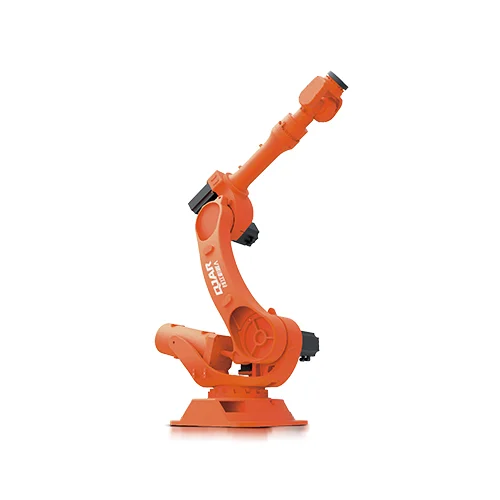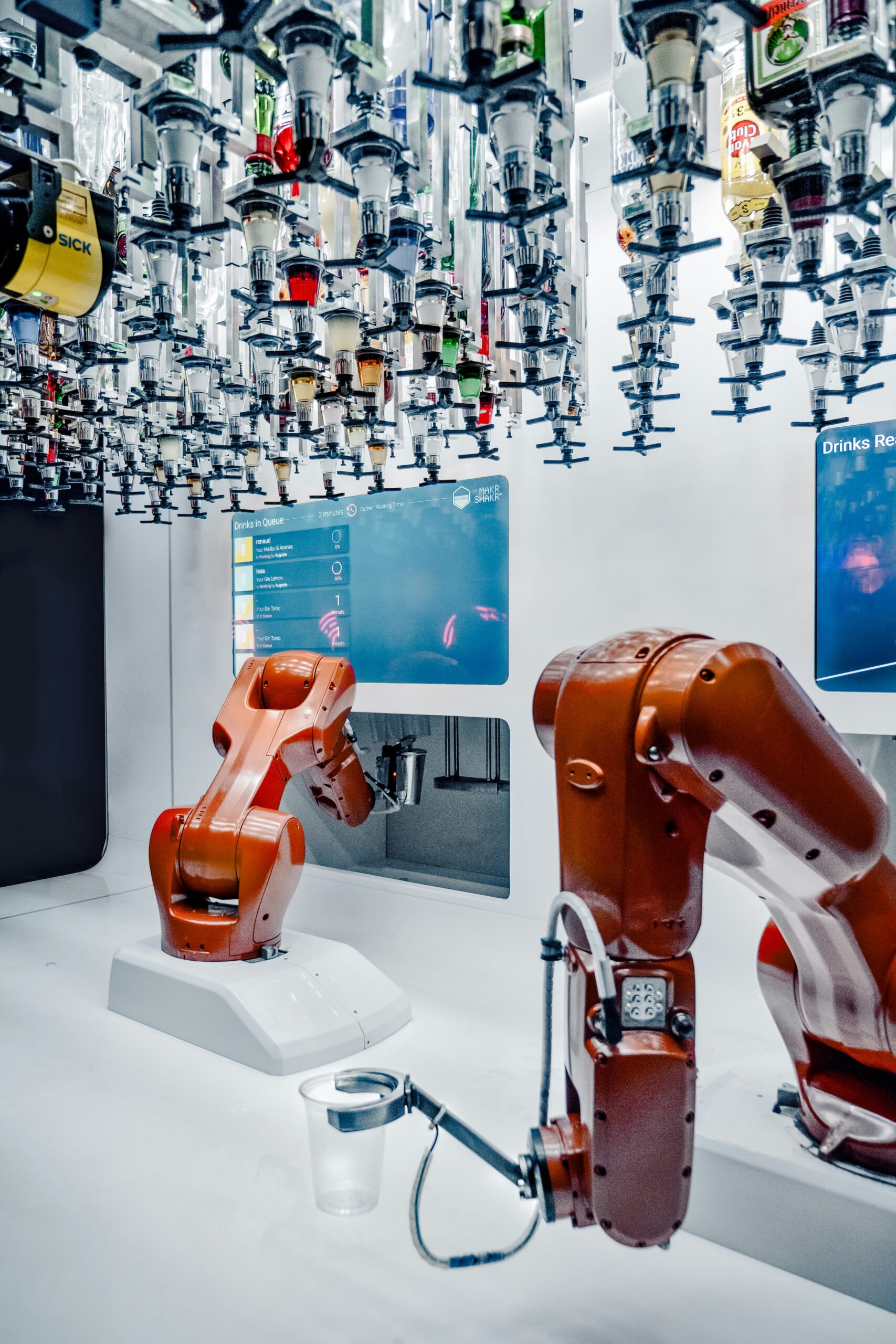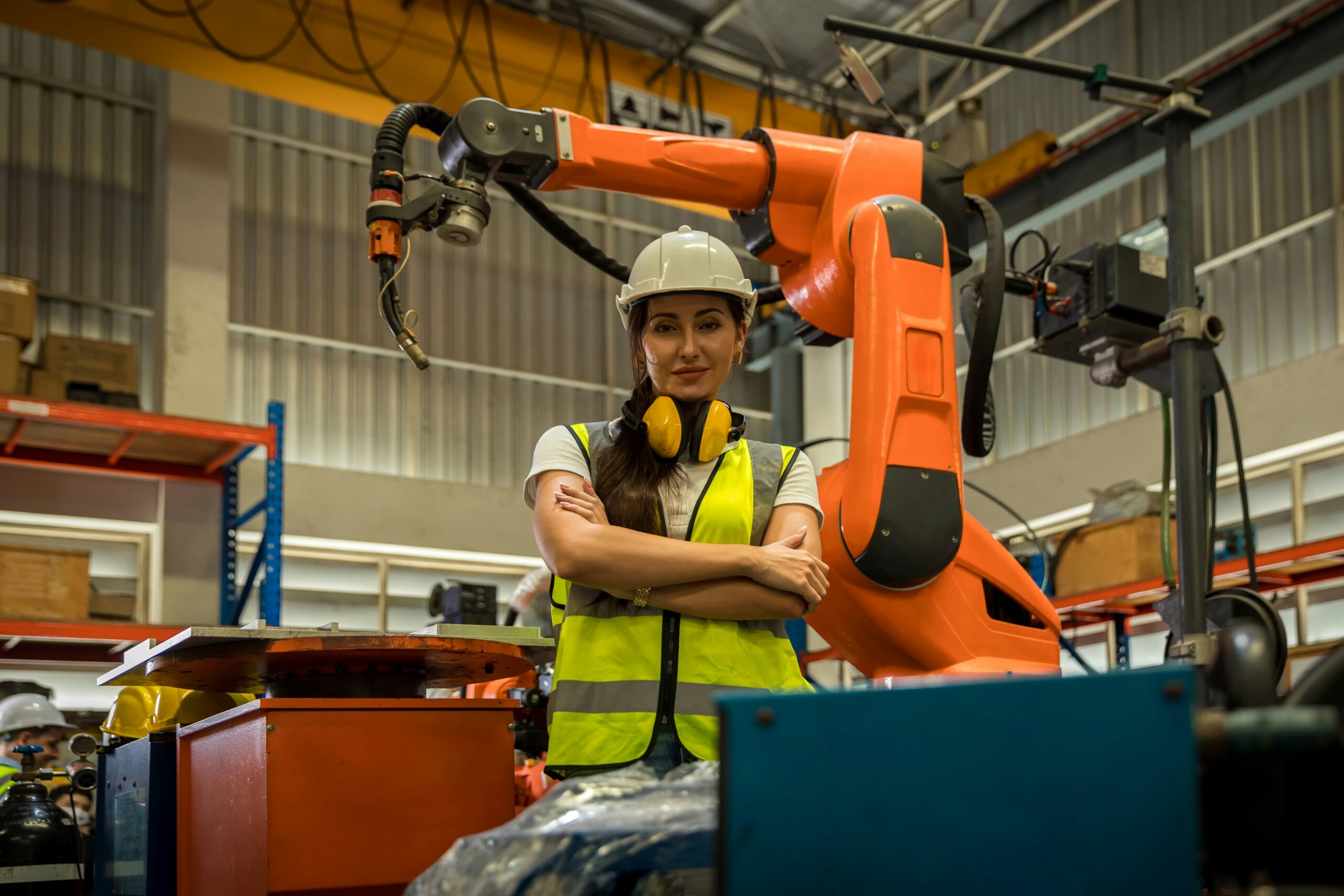Introduction
The incorporation of advanced robotics has recently prompted a significant paradigm shift in the manufacturing industry. Polishing robots have achieved revolutionary status in their domain, accomplishing tasks with an unparalleled degree of precision and efficacy. Increased productivity, decreased operational expenses, and improved product quality are all results that ensue from the implementation of these robots. An exemplary illustration can be found in the QJR210-1 robotic arm, which is renowned for its substantial payload capacity, broad outreach, and remarkable precision, rendering it well-suited for an extensive array of tasks, including polishing.
Synopsis of Manufacturing Robotics
Manufacturing robotics have undergone substantial advancements since the unveiled of the first industrial robot, Unimate, in the 1960s. Initial applications of robots involved mundane, repetitive tasks; nevertheless, significant technological progress has significantly expanded their capabilities. Assembly, welding, palletizing, and, most notably, precision finishing with polishing robots are just a few of the complex processes covered by robotics in manufacturing today.

By increasing productivity, consistency, and security, the incorporation of robotics in manufacturing processes has transformed the sector. The implementation of robotics in manufacturing has enabled the expansion of operations without compromising quality standards. Not only has this revolution decreased dependence on manual labor, but it has also mitigated human errors, resulting in improved product quality.
The Function of Robotic Polishing in Manufacturing
The purpose of polishing surfaces in order to attain a predetermined finish is the function of specialized machinery referred to as polishing robots. The sophisticated control systems and sensors that are integrated into these robots impart them with the ability to execute tasks with remarkable accuracy and dependability. In order to enhance the aesthetic and functional qualities of products, polishing robots perform surface finishing, deburring, and buffing, which are all fundamental operations.
Advantages of Employing Polishing Robots
Stability and Accuracy: Varnerations that may arise during manual labor are eradicated with the assistance of polishing robots, which guarantee processing uniformity. For sectors where product quality is of the utmost importance, this consistency is vital.
A substantial increase in production rate is achieved as a result of the fatigue-free operation of these robots on an ongoing basis. High-demand industries stand to gain significantly from this efficiency.
Mitigation of Human Error and Labor Costs: Labor costs can be decreased as a result of automated polishing, which eliminates the requirement for skilled labor. Moreover, the elimination of human error by robots results in elevated product quality and a reduction in defects.
Hazardous materials and environments are frequently encountered during the polishing process. Human health and safety are not compromised when robots execute these responsibilities.
Increasing Industry-Wide Demand
The automotive, aerospace, electronic, and medical device industries are among those where the demand for polishing robots is increasing. To illustrate, polishing robots find application in the automotive sector where they are utilized to attain an impeccable finish on car components, thereby augmenting their durability and aesthetic appeal. Through precise finishing, these robots ensure the functionality and durability of small, delicate components, which is a crucial function in the electronics industry.
The QJR210-1 Robotic Arm: An Overview
Showcasing cutting-edge robotics technology that is tailored to the particular requirements of contemporary manufacturing, the QJR210-1 robotic arm serves as a paradigm. A variety of functions, including welding, palletizing, loading and unloading, assembly, polishing, and handling, are all suitable for this incredibly compact and versatile robot.

Spacious Description of the Product
With an impressive reaching distance of 2688mm, the QJR210-1 has a payload capacity of 210kg. Large in size and accommodating for a variety of applications, its compact construction enables it to function in confined spaces. Maintaining a repeat positioning accuracy of ±0.2mm, the robot executes each task with precision despite its high-speed operation.
Phenomena Technical
Axis Number: 6; Model: QJR210-1
210 kg payload
Iterate the placement by ±0.2mm
Infinite Armspan: 2688mm
Speeds and Motion Range
J1: ±165º, 100º/s J2: +85º, -50º, 80º/s
J3: +75º, -160º, 95º/s
J4: ±360º, 130º/s
J5: ±120º, 120º/s J6: ±360º, 200º/s
Inertia and Torque Temporal Torque Permittable:
650N.m for J6 and 1200N.m for J5
J4: 84 kg.m² in moment of inertia
J5: 84kg.m²
J6: 55kg.m²
Supplementary Particulars
Robotic Mass: 1257 kilograms
30.6 kilovolts of power
Weight of the cabinet: 140 kilograms; dimensions: 6507501150mm
Five-wire, three-phase origin
Ground-Based Install Form
Handling, assembly, polishing, and grinding; welding; palletizing; loading and unloading; and palletizing.
In the realm of polishing robots, the QJR210-1 is an indispensable asset due to its massive payload capacity, extensive reach, and accurate positioning. It can perform a vast array of tasks with exceptional precision and efficiency due to its sophisticated construction and design.
The Automotive Sector: An Examination of Polishing Robots in Operation Case Study 1
Aspects of functionality and aesthetics are significantly influenced by the finish of automobile components. To improve the quality of its vehicle components, a leading automaker implemented polishing robots. The company’s rigorous standards were adhered to by these robots as they were programmed to polish exterior panels to a smooth, glossy finish.

The Results and Advantages
Excellence Enhancement: The implementation of polishing robots resulted in a uniform finish, thereby diminishing the quantity of flaws and the need for rework.
Efficiency Boost: The manufacturer was able to augment its production rate in response to the expanding market demand by automating the polishing process.
Significant financial savings were achieved as a result of the decrease in manual labor and rework.
Electronics Industry Case Study 2
Preciseness holds utmost importance within the electronics sector. In order to perform the finishing of minute components with extreme accuracy, a manufacturer of electronic components implemented polishing robots. Connectors and other delicate components were polished by these robots to ensure their performance and dependability.
The Results and Advantages
Components of superior quality were produced as a result of the robots’ unprecedented level of precision in comparison to manual polishing.
The electronic components’ durability and lifespan were extended as a result of the consistent polishing procedure.
Streamlining operations and decreasing production costs and time was achieved through the automation of the polishing process.
Aviation Sector Case Study No. 3
Strict quality and accuracy requirements are upheld by the aerospace sector. To enhance the surface quality of its components, an aerospace company incorporated polishing robots into its manufacturing sequence. The responsibility of these robots was to polish engine parts and other vital components to industry specifications.
The Results and Advantages
Enhancement of Performance and Dependability: The polishing robots successfully executed aerospace components with a superior finish.
Robotic Process Assurance: The completion of the products was verified to adhere to all regulations and industry standards.
The company was capable of meeting stringent deadlines as a result of the reduced lead time brought about by the automation of the polishing process.
Proximal Developments in Manufacturing Robotics
The future of robotics in manufacturing appears to be bright, with ongoing developments threatening to further transform the sector. The capabilities of polishing robots and other robotic systems are anticipated to be improved by subsequent developments and technologies.
Ahead of the Curve
It is expected that the integration of machine learning and artificial intelligence technologies into the domain of robotics will augment the effectiveness and adaptability of polishing robots. By integrating these technologies, robots will have the capability to optimize their processes, acquire insights from data, and carry out tasks with increased accuracy.
“Cobots” refer to collaborative robots. The purpose of cobots is to augment safety and productivity by operating in conjunction with humans. Enhanced manufacturing processes will be possible as a result of the development of cobots for polishing applications.
Stupulent Control Systems and Sensors: Elevated precision and dependability will be further improved by equipping polishing robots with sophisticated sensors and control systems. Real-time detection and response of robots to variations in the polishing process will be made possible by these technologies.

Effects to Come
The manufacturing sector will be significantly altered by the ongoing development of polishing robots. Cost savings, enhanced productivity, and improved product quality will result from these developments. Moreover, the implementation of novel technologies will generate fresh opportunities for fabrication process customization and innovation.
Difficulties Potential
The need for proficient personnel to operate and maintain the robots, the substantial upfront expenses associated with robotic systems, and resistance to deviating from traditional manufacturing practices are all potential barriers. It is expected that continuous research and development will surmount these challenges, thereby facilitating the extensive adoption of polishing robots.
In summary
With the introduction of polishing robots, a significant milestone in the advancement of robotics in manufacturing was reached. Enhanced accuracy, heightened output, and financial savings are among the many benefits that these advanced machines offer. The QJR210-1 robotic arm exemplifies the state-of-the-art technology that is driving this paradigm shift through its remarkable accuracy, broad outreach, and substantial payload capability.
The manufacturing sector will experience additional changes as additional industries adopt polishing robots. In order to maintain a leading position in the field of precise finishing, polishing robots must continue to incorporate novel methodologies and incorporate cutting-edge technologies. There are innumerable opportunities for robotics in manufacturing to improve quality, efficiency, and innovation; their future is shining.
